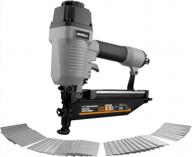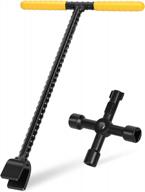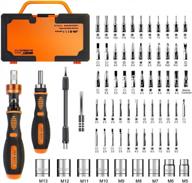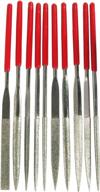
Review on 4 Gallon 135 PSI Oil-Lubricated Compressor By BOSTITCH CAP2041ST-OL by Tony Watts

An excellent compressor, well-built, relatively light, nicely balanced and very portable
This Bostitch is an upgraded version of the CAP2040ST-OL. It is less expensive but provides comparable specs and is slightly lighter. It is supposed to be much quieter, but I have never used the older version so I cant judge. It is my supposition that the CAP2041ST-OL was developed as a competitor to the Makita MAC2400 which up until now has been the choice of most of us who bought an air compressor for home use or small contracting use. Because the Makita is still available and remains very popular, I have used most of this review to compare the two. In my opinion, if you are buying a compressor for home or small business use, it comes down to choosing between the CAP2041ST-OL and the MAC2400. They have very similar specs. Because the current ebay page does not show the back of the compressor, I have added a picture of the back as well as the water purge valves (which are very convenient) below. I also provide a noise comparison of the two compressors.Comparison to the Makita MAC2400.Up until now, the Makita MAC2400 compressor has been viewed by most as the best medium sized compressor to buy. I own one and have enjoyed using it for 8 years. I selected it based on the ebay reviews. It has specs roughly equivalent to the Bostitch CAP2041ST-OL. I love the Makita MAC2400, but compared to this Bostitch, it may not be the better choice. It costs more and it is much heavier and bigger and is poorly balanced so moving it around is difficult. In comparison, the Bostitch CAP2041ST-OL is smaller, better balanced and lighter (58 lbs. versus 77 lbs.). What the Makita offers is a lower frequency operation with slightly less total noise level (see comparison figure). Simply put, the Makita sings at a lower frequency and is slightly less annoying to use. But unlike most of the Bostitch compressors I have used, the CAP2041ST-OL appears to have been designed to keep the noise level down and the modifications introduced in this compressor work very well. I find both compressors to be easy to work with even indoors. The Bostitch makes it much easier to remove water from the air tanks by providing ball valves that are easy to open and reach from the front (see picture). In contrast, the Makita requires access from the rear and uses a needle valve that is harder to turn. The muffler on the CAP2041ST-OL is effective in reducing the high frequency whine that is typical of the vast majority of air compressors. Using an oil lubricated compressor lowers the noise significantly too. But if noise is your primary consideration, the Makita should be your choice. If portability and cost are more important, the Bostitch should be your choice. To be honest, both are excellent (five star) compressors. If looks are important, the Bostitch beats the Makita hands down (but who buys compressors based on looks?). In summary, if I had to buy a new one, it would be the Bostitch because it is cheaper and much easier to move around while providing comparable performance.Pros (in no particular order):1. Very cost effective compared to other mid-sized compressors.2. One of the quietest Bostitch air compressors available. Only slightly noisier thanthe Makita MAC2400 Big Bore compressor known for its quiet (see spectrum analysis picture).3. Very rugged and well-built. All components appear to be high end.4. Controls, gauges and connects are well protected by the roll bar.5. Relatively light (58 lbs.) given the pressure and throughput capabilities and nicely balanced so it is easy to move around by hand.6. Oil-lubricated and the use of a cast-iron cylinder suggests long life.7. Large oil capacity which is a time saver and should improve reliability.8. Can be used on a standard 15 amp AC line. Pulls 13.5 amps during pressurization.9. Starts very well even when the tank is pressurized thanks to a cold start valve.10. Can maintain 105 psi easily.11. 3.8 SCFM at 90 psi is more than adequate for most applications.12. The water release valves are easy to get to and much easier to open than the one on the Makita.13. The manual is excellent except for the stupid safety section (see cons below).Cons (in no particular order):1. While roughly equivalent to the Makita MAC2400 in terms of average noise, the compressor sound is shifted to higher frequency which is somewhat more noticeable (see spectrum analysis picture).2. Does not include a site glass to monitor oil level. (However, it is trivial to use the oil level stick and that is certainly more accurate.)3. Only provides one output port (the Makita has two).4. The pressure gauges go from 0-300 psi instead of 0-200 psi, which means it is a bit more difficult to adjust the output pressure accurately.5. The safety section of the manual was written by a lawyer and the safety section is an insult to anyone with a brain. It includes comments such as avoid over inflating the tires as doing so might cause serious injury. Trust me, you cannot over inflate the tires because there are none. There are at least five other safety items which are so obvious as to be insulting. I take no points off for this as it has become a common problem of our litigious society. I am just venting.

- Great compressor, showed up early
- already messed up and passed the return time ..
New products
Comments (0)
Similar reviews
Top products in 🛠️ Power Tools

Pneumatic Straight Finish Nailer With 2000 Count Nail Bundle - NuMax SFN64WN 16-Gauge 2-1/2

41 Review

LOSTRONAUT Water Meter Key 12 Inch: Heavy-Duty Contractor Grade Steel T-Handle Tool for Curb Main Water Shutoff Valve with 4-Way Multifunctional Utility Key

35 Review

DEWALT DCS356B 20V Max XR Oscillating Multi-Tool - Variable Speed (Tool Only)

47 Review

Efficient Wire Stripping Made Easy: KAIWEETS Automatic Stripper With 260 Connectors And Terminals

38 Review
Another interesting products

JAKEMY 69 In 1 Precision Ratchet Screwdriver Set For Household Repairs And Maintenance - Magnetic, Rotatable, And Disassemble Tool Kit For Furniture, Cars, Computers, And Electronics

29 Review

Sharpen Your Tools With HTS 101I0 6Pc 180Mm / 40-600 Grit Diamond Flat File Set

28 Review

140Mm/150 Grit Diamond Needle File Set - 10 Piece HTS 101E0

30 Review

FANSTINOW Folding Knife: Compact, Durable & Easy To Carry!

30 Review

